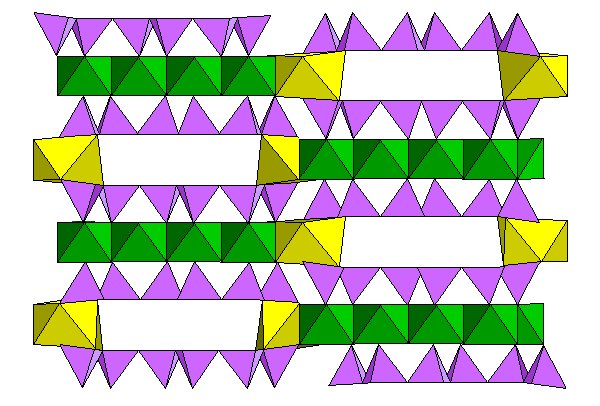Jimthompsonite and Clinojimthompsonite Structure
Steven Dutch, Professor Emeritus, Natural and Applied Sciences, University of Wisconsin - Green Bay
Jimthompsonite (so named because the name thompsonite was already taken) isn't a conspicuous mineral or very abundant. It's probably more abundant than we think simply because people don't look for it very often. But it's a very important mineral because it was the first triple-chain silicate ever discovered in 1978.
The structure is actually pretty simple. Think of it as a stretch-limo version of an amphibole, with the silica and cation chains split down the middle and an extra chain added. The silica chains are shown here in purple.

Below are the cation polyhedra, with Mg-O polyhedra in green and iron in yellow.

Below is a view of the silica tetrahedra and their linkages to the cation polyhedra.

Below, the structure viewed end-on. The wide voids between the strips suggest there are probably space-filling atoms or water molecules in there helping to bind the layers together.

In plan and end-on view, jimthompsonite and clinojimthompsonite look identical. But viewed from the side, the difference is in the stacking arrangement of the layers. Below is a longitudinal view of jimthompsonite

Below is a longitudinal view of clinojimthompsonite.

Return to Mineralogy-Petrology Index
Return to Thin-Section Index
Return to Crystals and Light Index
Return to Crystal Structures Index
Return to Mineral Identification Tables
Return to Professor Dutch's Home Page
Created 22 April 2013, Last Update